The Best Fluffy Pancakes recipe you will fall in love with. Full of tips and tricks to help you make the best pancakes.
Best Traditional Ramadan Food to Try in Morocco | Dishes
Ramadan in Morocco is a time of deep spirituality, family gatherings, and delicious food. As the sun sets, Moroccan families come together to break their fast with traditional dishes and age-old customs that make this holy month truly special. Here are some things you can expect to experience during Ramadan in Morocco.
The month of giving and generosity
Ramadan is a month of self-reflection and a time for giving back to those in need. In Morocco, it is common for families to donate food or money to less fortunate members of their community. This spirit of generosity also extends to inviting friends and neighbours for meals throughout the month.
A rich cultural experience
During Ramadan, the streets of Morocco come alive with vibrant decorations and activities. Many cities hold traditional storytelling sessions called “halaqa”, where people gather to listen to tales from Moroccan folklore. The markets are bustling with shoppers buying ingredients for
How Is Ramadan Observed in Morocco?
Ramadan in Morocco is observed with deep spiritual dedication and rich cultural traditions. The holy month is marked by fasting from dawn (fajr) until sunset (maghrib), with families and communities coming together to share the special iftar meal to break the fast. Moroccan iftar table staples are traditional foods such as harira (a hearty soup), dates, chakra (a sweet pastry), and mint tea. The streets often come alive after sunset, with vendors selling snacks and drinks, while mosques fill with worshippers for the Taraweeh prayers. Charitable acts, including giving to people experiencing poverty and supporting neighbors, are highly emphasized during this time. Ramadan in Morocco is a religious practice and a time of unity, reflection, and celebration of community values.
What Are the Traditional Ramadan Customs in Morocco?
Ramadan in Morocco is a distinctive and highly spiritual experience deeply rooted in tradition and community values. The day begins with the pre-dawn meal known as “Suhoor,” where families gather to eat and prepare themselves for the day of fasting ahead. During the fast, Moroccans focus on prayer, charitable acts, and reflection, aligning with the spiritual essence of Ramadan.
At sunset, the fast is broken with “Iftar,” a meal often started with dates and milk, followed by hearty dishes like “harira,” a traditional Moroccan soup, and an array of sweets, such as “chakra.” Mosques come alive during this holy month, particularly during “Taraweeh” prayers performed after the last daily prayer. Social gatherings and shared meals are central to the community spirit of Ramadan, creating a warm and inclusive atmosphere. Ramadan in Morocco is truly a time of unity, gratitude, and devotion.
What Are the Best Foods to Try During Ramadan in Morocco?
After a long day of fasting, Moroccan iftar tables are filled with various traditional dishes that are both flavorful and nourishing. Moroccan cuisine offers a unique Ramadan experience from hearty soups to sweet pastries.
In this article, we’ll show you 8 of the best Moroccan dishes you must try during Ramadan.
Harira
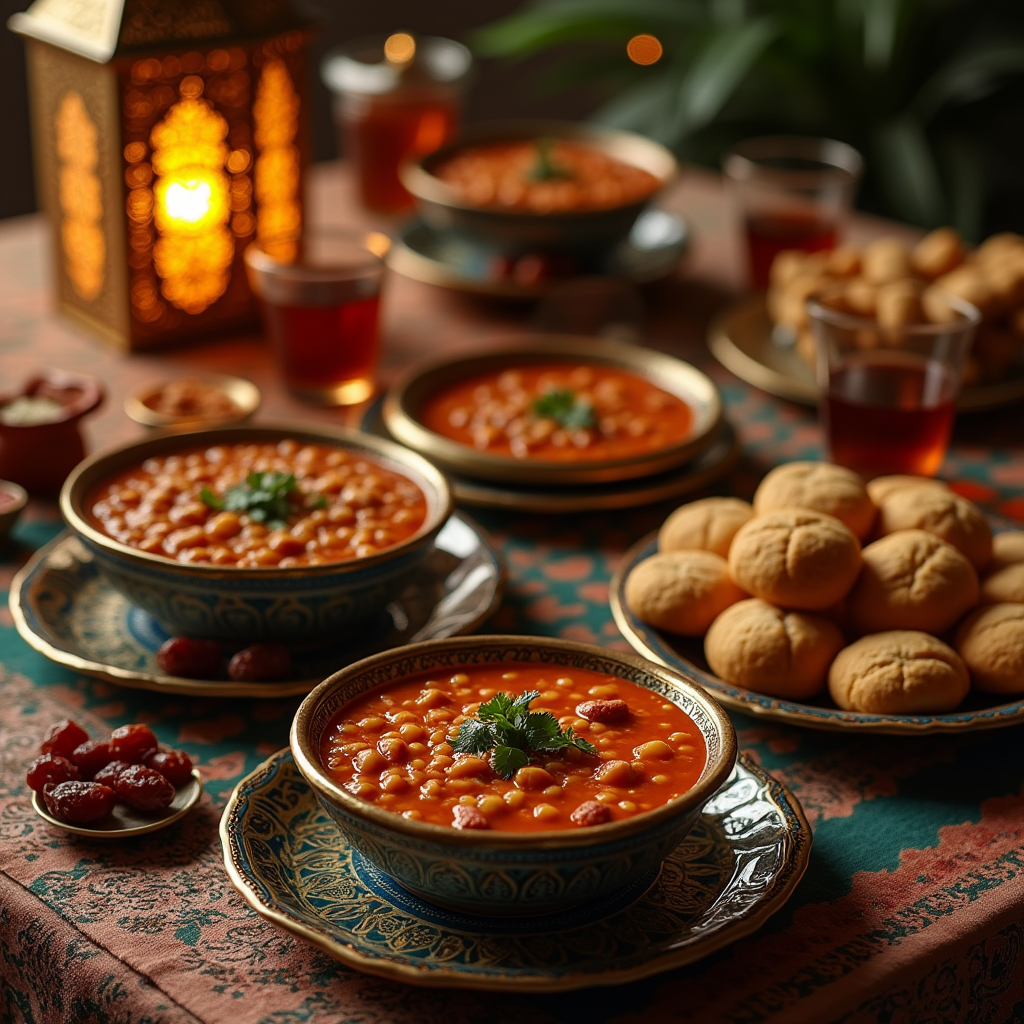
Harira is a traditional Moroccan soup cherished for its hearty and flavorful characteristics. It is often made with a combination of lentils, chickpeas, tomatoes, and aromatic spices such as turmeric, cinnamon, and ginger. Commonly served during Ramadan to break the fast, Harira holds significant cultural and spiritual importance. While it is typically enjoyed with a squeeze of lemon and a side of bread, each region and family often has its unique recipe, adding to its rich culinary heritage.
How to Make Traditional Moroccan Harira Soup
Craving the rich, comforting taste of Moroccan Harira? This step-by-step recipe will show you how to make this hearty soup with lentils, chickpeas, tender meat, and aromatic spices. Perfect for breaking the fast during Ramadan or warming up on a chilly day
Briouates
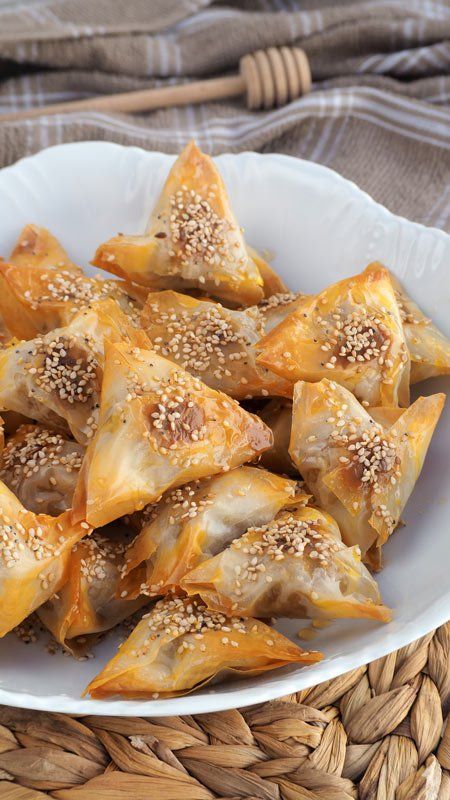
Briouates are small pastries, often triangular or cylindrical, that can be sweet or savory. They are traditionally filled with ingredients like spiced meat, cheese, or almonds and are either fried or baked to achieve a crispy exterior. Sweet briquettes are usually coated in honey and flavored with orange blossom water.
Chebakia
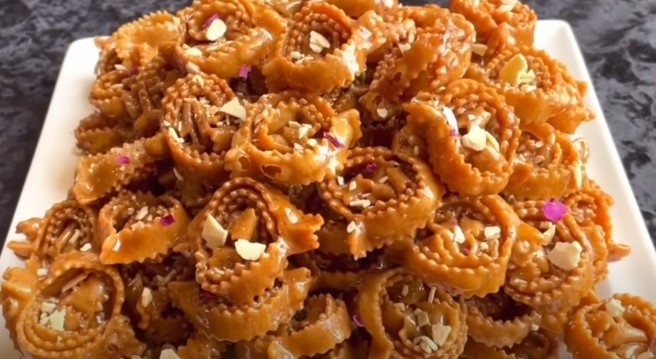
Chebakia is a traditional Moroccan sweet popular during the holy month of Ramadan. These flower-shaped cookies are made from dough flavored with sesame seeds, anise, and cinnamon. They are deep-fried until golden and then coated in honey and sprinkled with sesame seeds.
How to Make Moroccan Chebakia
Want to prepare authentic Moroccan Chebakia at home? This step-by-step video recipe will guide you through making these crispy, honey-soaked sesame cookies, a staple during Ramadan. Follow along to achieve the perfect golden texture and rich flavour
Sellou

Also known as sfouff or zmita, Sellou is a highly nutritious Moroccan dessert often prepared during Ramadan or for special occasions. It consists of roasted flour, almonds, sesame seeds, and honey, creating a powdery, slightly crunchy treat with a rich, nutty flavor.
How to Make Traditional Moroccan Sellou
Want to make authentic Moroccan Sellou at home? This step-by-step recipe will guide you through preparing this rich, nutty, and flavorful treat, perfect for Ramadan or any special occasion. Follow along to create the perfect blend of roasted flour, almonds, and spices.
Baghrir
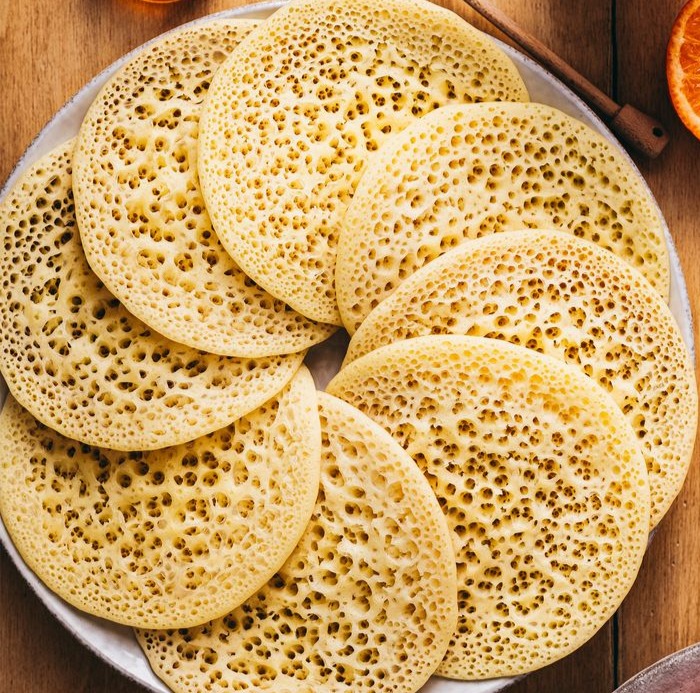
Baghrir, also called “Moroccan pancakes” or “thousand-hole pancakes,” are soft, spongy flatbreads made from semolina. They are typically served warm, drizzled with honey and melted butter, making them a delightful dish for breakfast or tea time.
Msemen

Msemen is a versatile, flaky, layered Moroccan flatbread often served for breakfast or as a snack. It is made by folding and stretching the dough multiple times, resulting in a chewy interior and crispy edges. Msemen can be enjoyed with honey, butter, jam, or savory fillings.
harcha
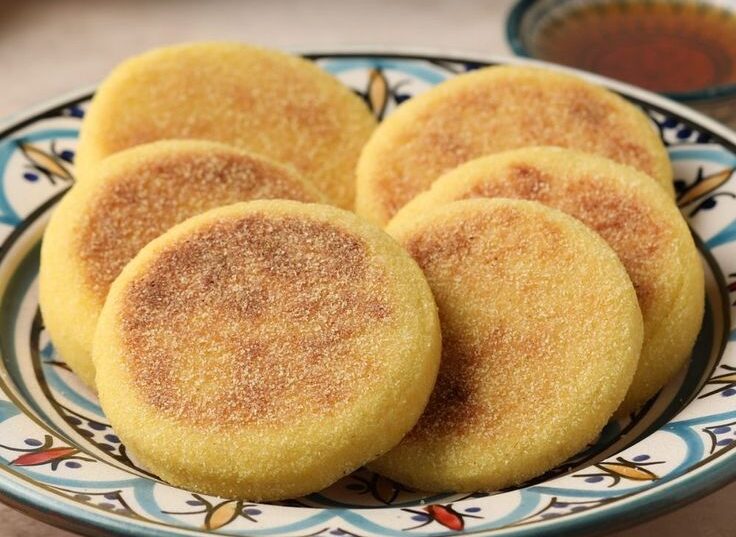
Harcha is a semolina-based Moroccan flatbread with a crumbly, tender texture and a slightly sweet flavor. It is often served warm, accompanied by honey, cheese, or olive oil. Harcha is a popular choice for breakfast or a light snack.
Mint Tea
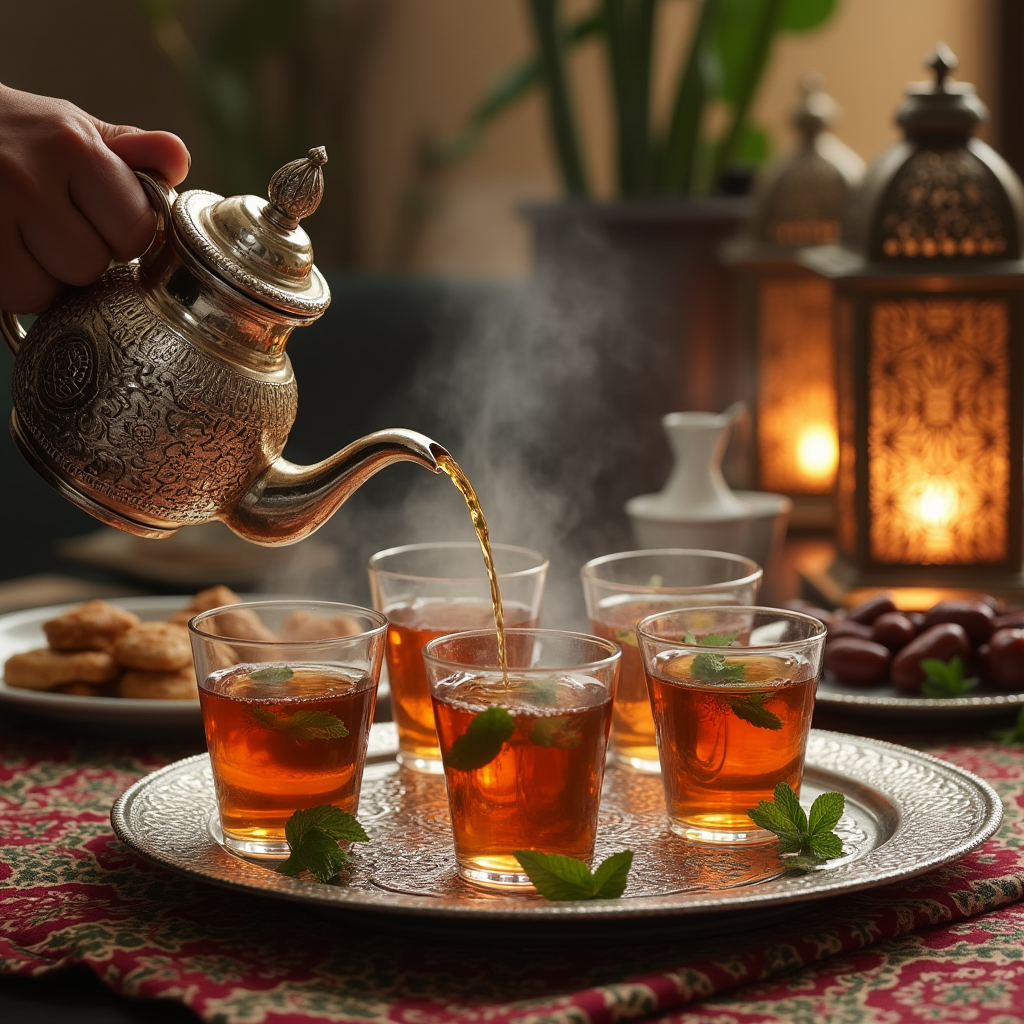
Moroccan mint tea, also known as “Maghrebi mint tea,” is an iconic beverage symbolizing hospitality and tradition. Prepared with green tea, fresh mint leaves, and sugar, this fragrant and refreshing drink is commonly served in small glasses, accompanied by sweet pastries.
conclusion
Ramadan in Morocco is a time of deep spiritual reflection, community bonding, and rich culinary traditions. Each dish carries a story of tradition and togetherness, from the comforting Harira soup to the sweet delights of Chebakia and the refreshing taste of Moroccan mint tea. The iftar table in Morocco is more than just a meal—it’s a cultural experience that brings families and friends together after a day of fasting.
Whether you are in Morocco or looking to bring Moroccan flavors to your Ramadan celebrations, these traditional dishes are a must-try. Exploring Moroccan Ramadan cuisine enhances your iftar experience and connects you to a centuries-old culinary heritage.
If you plan to try Moroccan Ramadan foods, start with these authentic and time-honored dishes for a truly unforgettable iftar experience.
Explore More Delicious Ramadan Dishes:
Signature Ramadan Meals of Tunisia
Must-Try Ramadan Dishes in Algeria
Historical Ramadan Dishes of Egypt
Must-Try Ramadan Dishes in Qatar | Traditional Qatari Iftar Foods
Ramadan Delicacies from Jordan You Need to Taste
Ramadan Foods Rich in Tradition from Sudan: Must-Try Dishes


[…] Best Traditional Ramadan Food to Try in Morocco […]